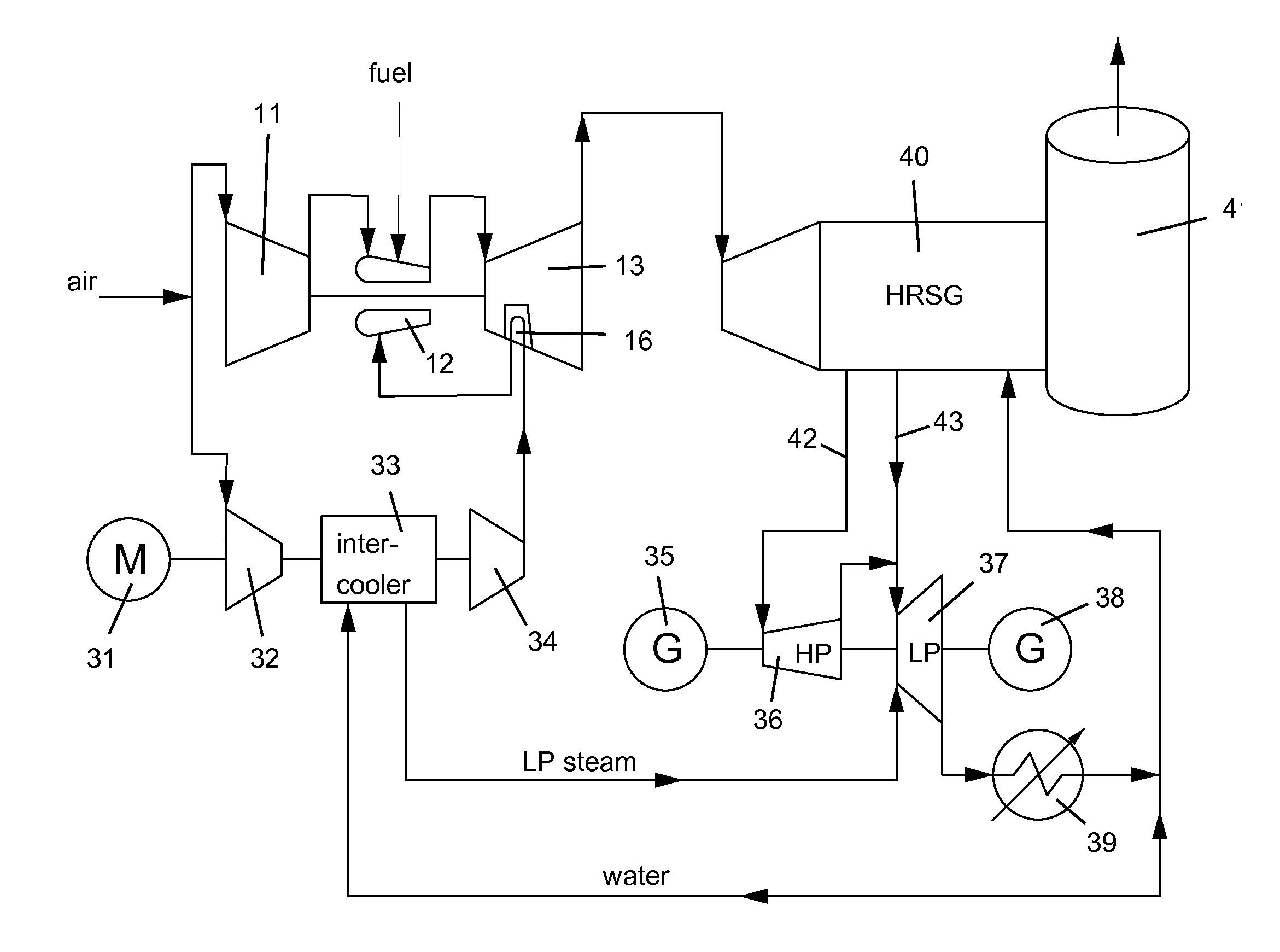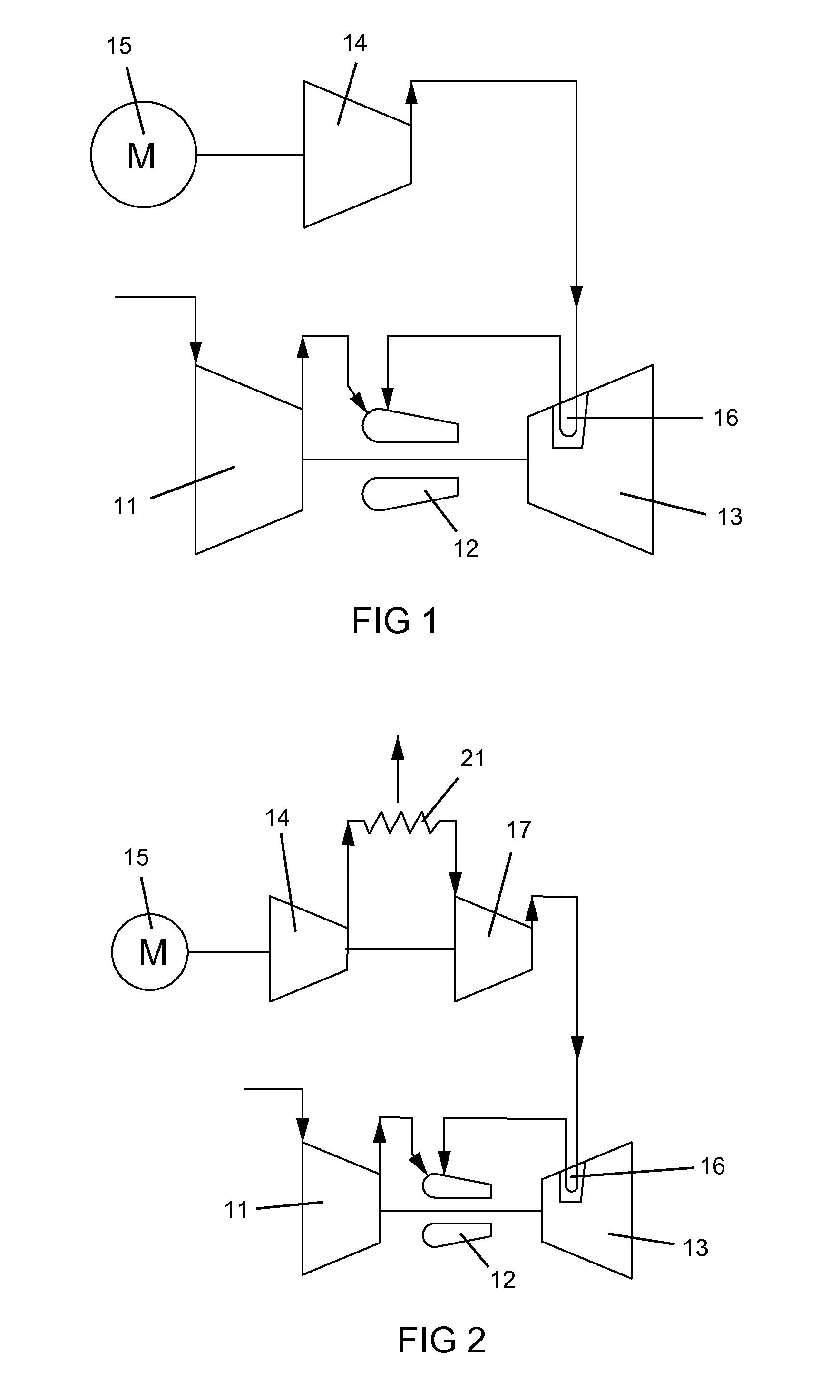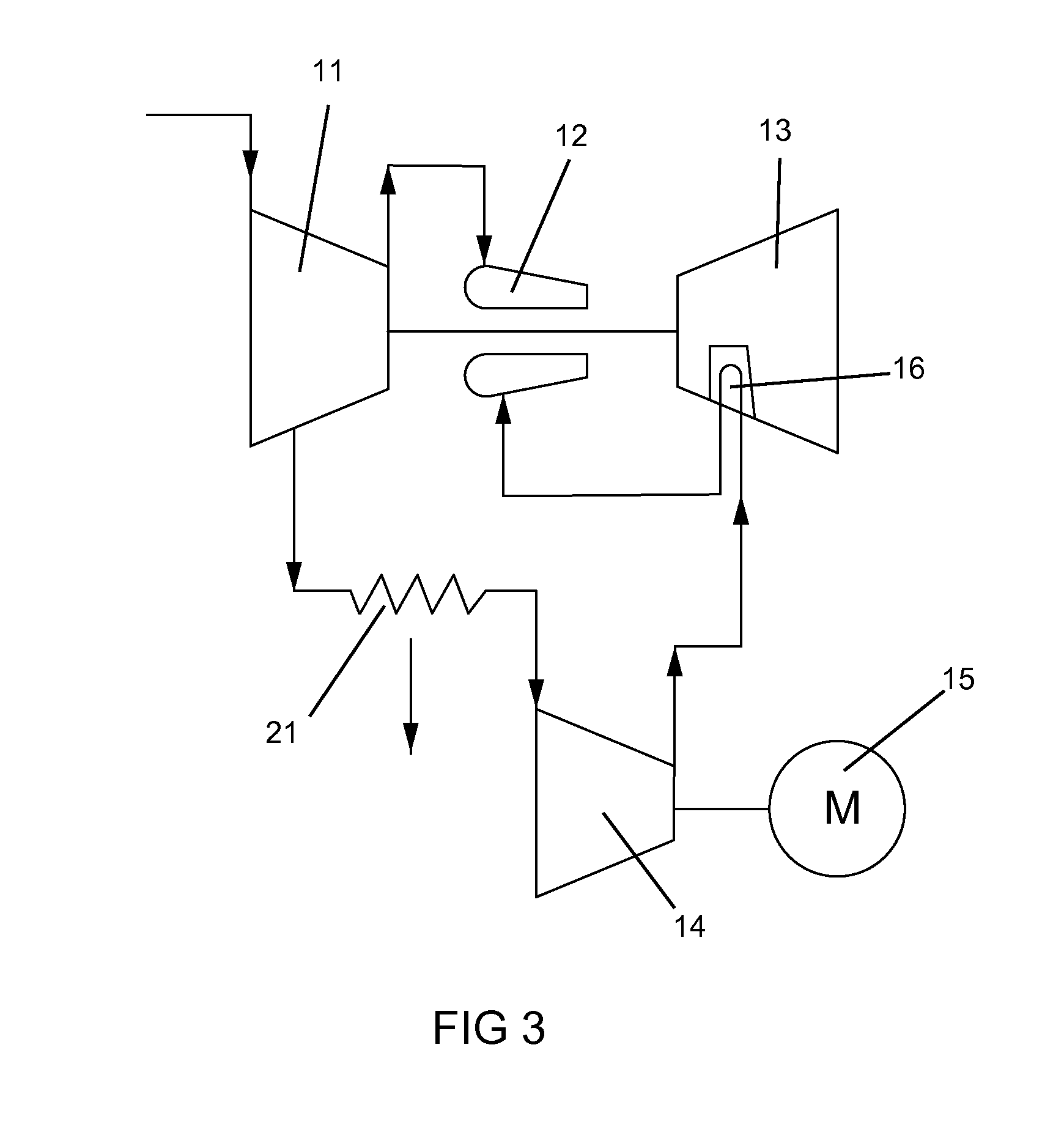High pressure ratio twin spool industrial gas turbine engine
a gas turbine engine and high pressure ratio technology, applied in the direction of engines, efficient propulsion technologies, mechanical devices, etc., can solve the problems of limited inlet temperature of the turbine to the material properties of the turbine, low component (compressor and turbine), and limit the low power limit at which the engine is allowed to operate. , to achieve the effect of reducing the temperature of compressed air and high engine efficiency
- Summary
- Abstract
- Description
- Claims
- Application Information
AI Technical Summary
Benefits of technology
Problems solved by technology
Method used
Image
Examples
first embodiment
[0035]The present invention is a gas turbine engine with cooling of the turbine stator vanes. FIG. 1 shows the present invention with a gas turbine engine having a compressor 11, a combustor 12 and a turbine 13 in which the compressor 11 and the turbine 13 are connected together by a rotor shaft. The turbine 13 has a first stage of stator vanes 16 that are cooled. The compressor 11 compresses air that is then burned with a fuel in the combustor 12 to produce a hot gas stream that is passed through the turbine 13. A second compressor 14 is driven by a motor 15 to compress air at a higher pressure than from the first compressor 11. The higher compressed air is then passed through the stator vanes 16 in the turbine 13 for cooling, and the heated cooling air is then passed into the combustor 12 to be combined with the fuel and the compressed air from the first compressor 11.
[0036]The second compressor 14 produces high pressure compressed air for cooling of the stator vanes 16 such that ...
second embodiment
[0037]FIG. 2 shows the present invention in which the two stage (14, 17) compressor (i.e.: a multiple stage axial flow compressor) includes an inter-stage cooler 21 to cool the compressed air in order to increase the performance of the two stage compressor (14, 17). The compressed air from the two stage compressor (14, 17) and the inter-stage cooler 21 is then used to cool the stator vanes 16 which is then discharged into the combustor 12. The two stage compressor (14, 17) with the inter-stage cooler 21 produces a higher pressure cooling air than the first compressor 11 so that enough pressure remains after cooling of the stator vanes 16 to be discharged into the combustor 12.
third embodiment
[0038]FIG. 3 shows the present invention where the cooling air for the stator vanes 16 is bled off from a later stage (after the first stage) of the first compressor 11, passed through an inter-stage cooler 21, and then enters a second compressor 14 to be increased in pressure. The higher pressure air from the second compressor 14 is then passed through the stator vanes 16 for cooling, and then discharged into the combustor 12.
[0039]In the three embodiments, the first or main compressor 11 provides approximately around 80% of the required air for the combustor 12. The second compressor 14 produces the remaining 20% for the combustor 12. In one industrial gas turbine engine studied, the first or main compressor 11 has a pressure ratio of 30 (that is, the outlet pressure is 30 times that of the inlet) while the second compressor 14 has a pressure ratio of 40 (that is, the outlet pressure is 40 times that of the inlet).
[0040]FIG. 4 shows another embodiment of the present invention with...
PUM
 Login to View More
Login to View More Abstract
Description
Claims
Application Information
 Login to View More
Login to View More - R&D
- Intellectual Property
- Life Sciences
- Materials
- Tech Scout
- Unparalleled Data Quality
- Higher Quality Content
- 60% Fewer Hallucinations
Browse by: Latest US Patents, China's latest patents, Technical Efficacy Thesaurus, Application Domain, Technology Topic, Popular Technical Reports.
© 2025 PatSnap. All rights reserved.Legal|Privacy policy|Modern Slavery Act Transparency Statement|Sitemap|About US| Contact US: help@patsnap.com



